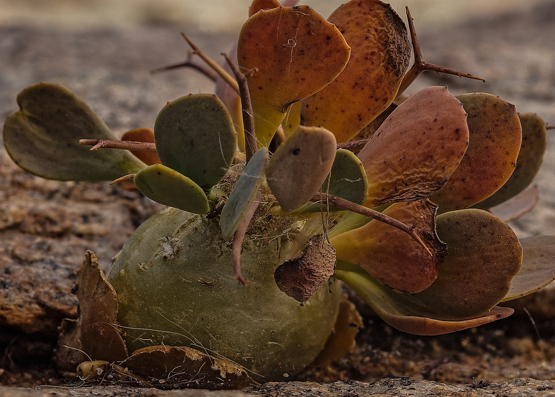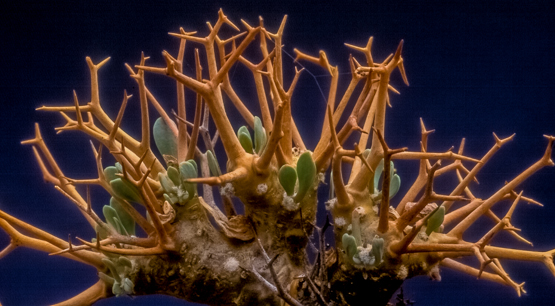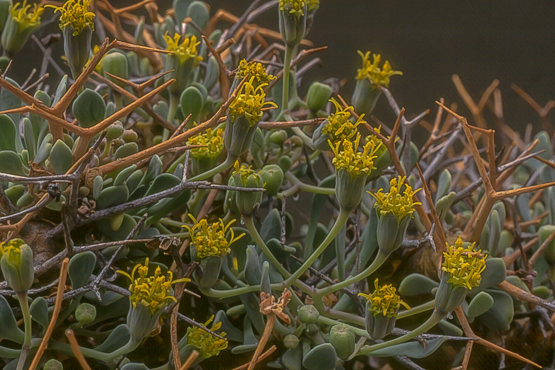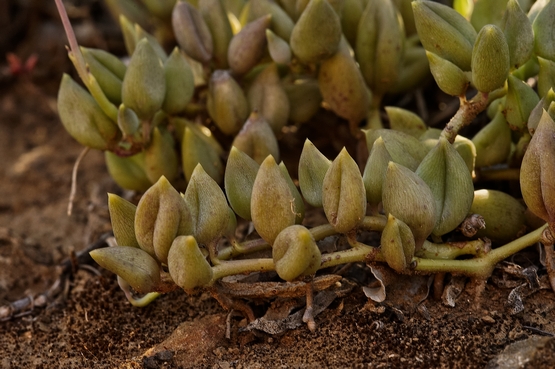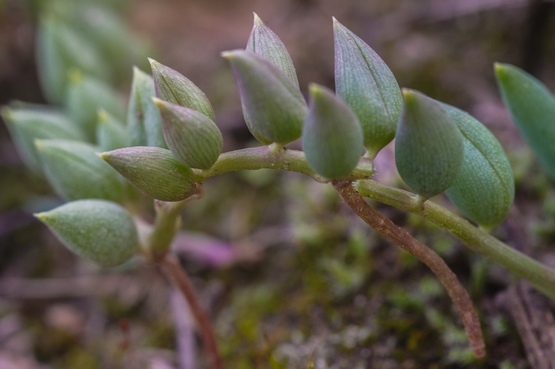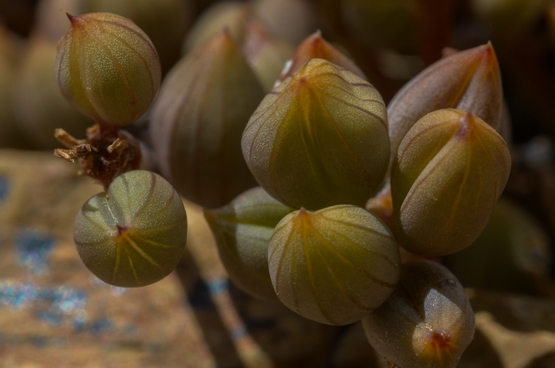The specific epithet means looking like a Euphorbia and refers to the spines, which in reality are persistent petioles (leaf stalks). The plants occur in Namaqualand, from Kamieskroon to Steinkopf and further west. Their typical habitat is cracks in granite outcrops.
The last two pictures were made in cultivation.




